Golden trees and black bears in Great Smoky Mountains and Cades Cove
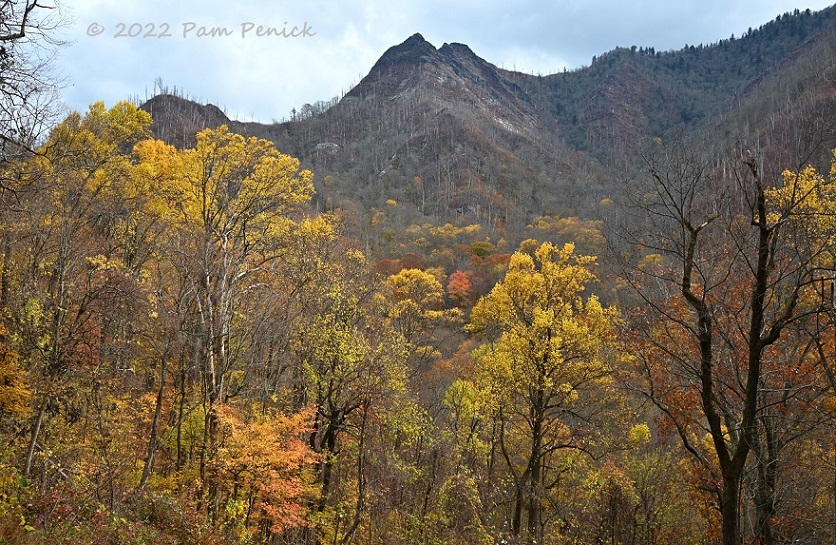
On Halloween, we sought the warm colors of autumn — pumpkin orange, harvest gold, bonfire red — along the Blue Ridge Parkway and in Great Smoky Mountains National Park, which straddles the North Carolina-Tennessee border. And we found them too, despite the lateness of the leaf-peeping season, in a year when the trees turned early. In this mountainous region, the fall foliage season starts high on the mountaintops and then colorizes the slopes and eventually the valleys. We found plenty of color to make us glad we’d come.
Chimney Tops
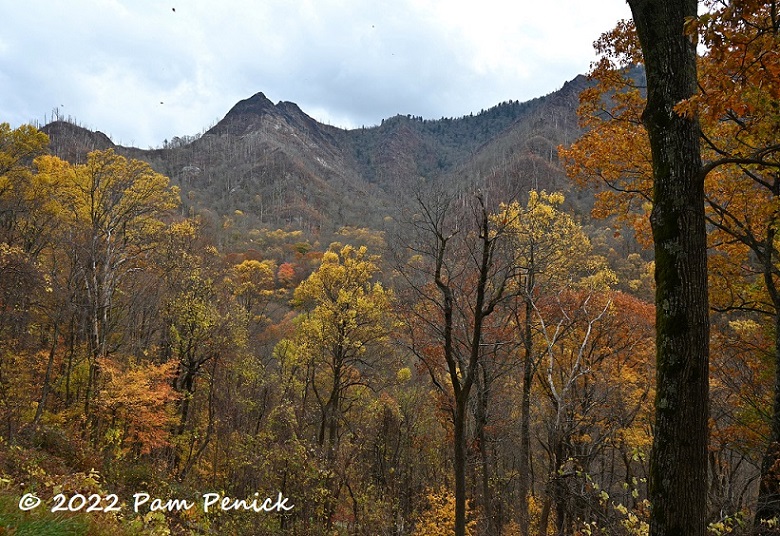
Chimney Tops in Tennessee was especially beautiful with black-trunked trees, gold and orange leaves, and a craggy, notched mountain of weathered stone.
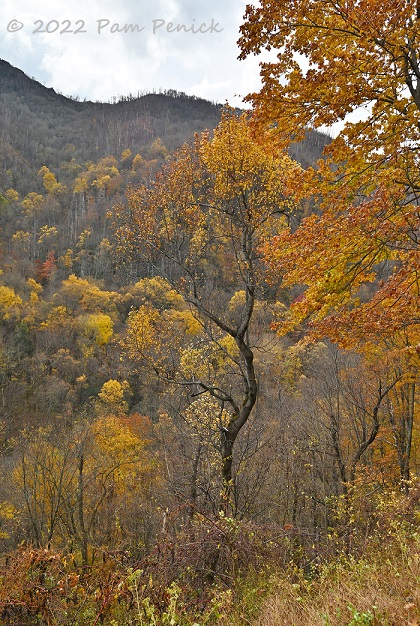
One graceful, sinuous tree reminded me of a Japanese calligrapher’s brushstroke.
Blue Ridge Parkway
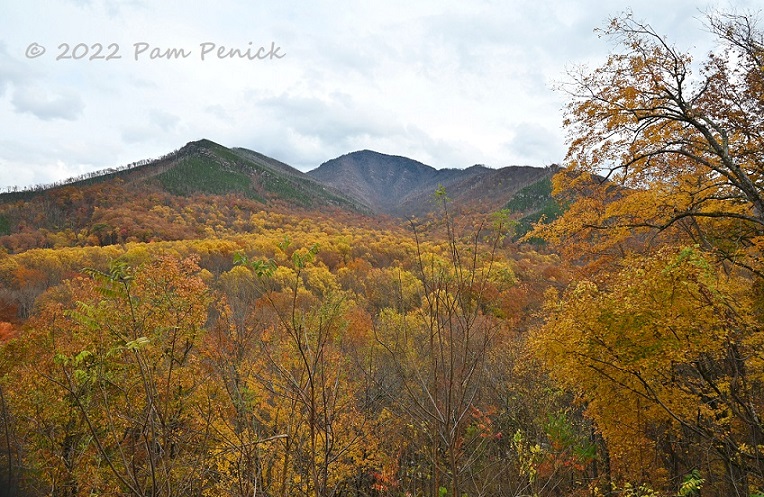
Cruising along the Blue Ridge Parkway, we stopped at numerous overlooks for views like this: a glowing, golden valley against rumpled mountain flanks.
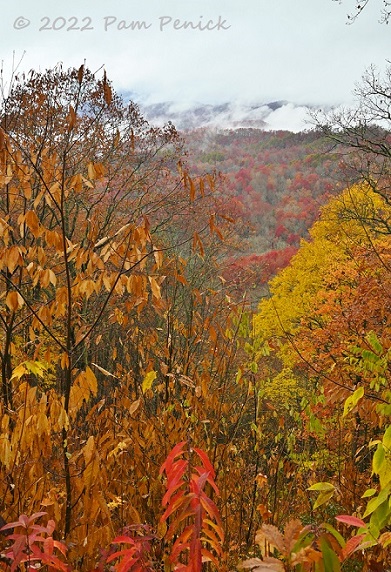
Clouds catching on distant mountaintops at Thomas Divide Overlook near Cherokee, North Carolina
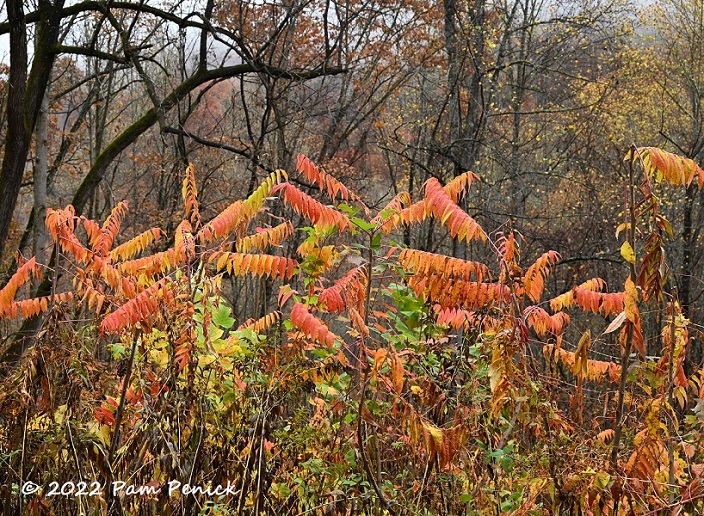
Appropriate Halloween colors
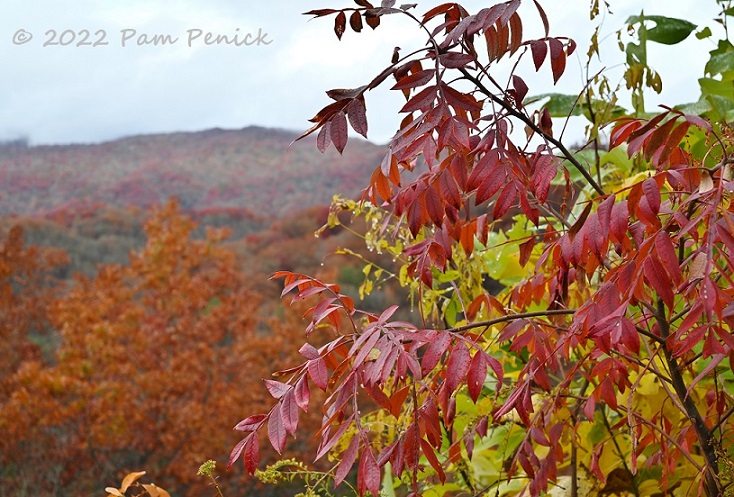
Red and orange
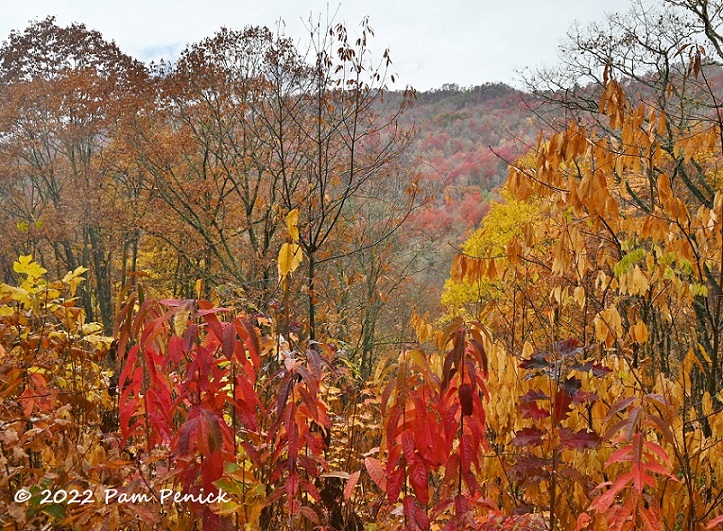
And more
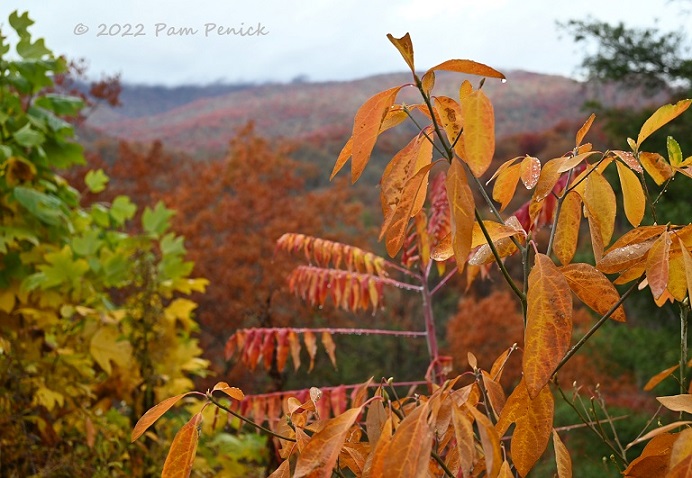
And more! I drank it up, knowing that fall color (such as it is) wouldn’t arrive in Austin until around Thanksgiving — now, in fact.
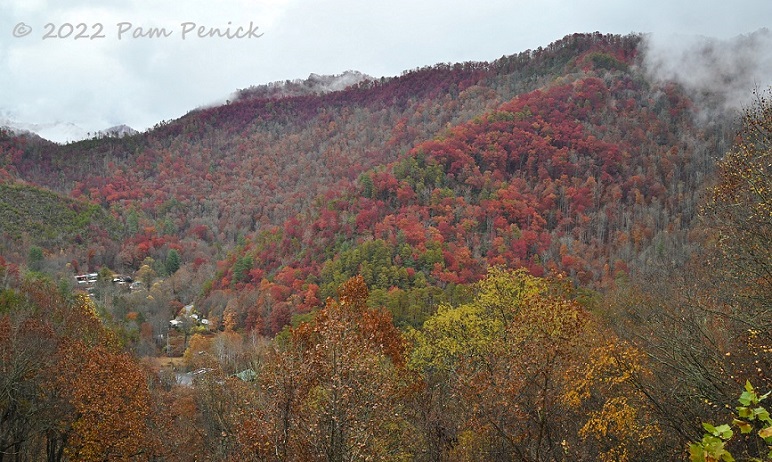
Red foliage with cloud wisps
Wild turkeys on the Blue Ridge
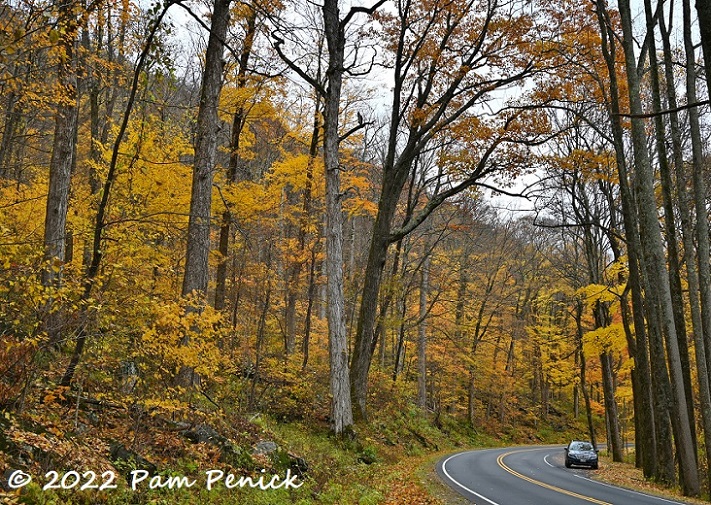
One particularly beautiful stretch of golden trees demanded we pull over for pictures.
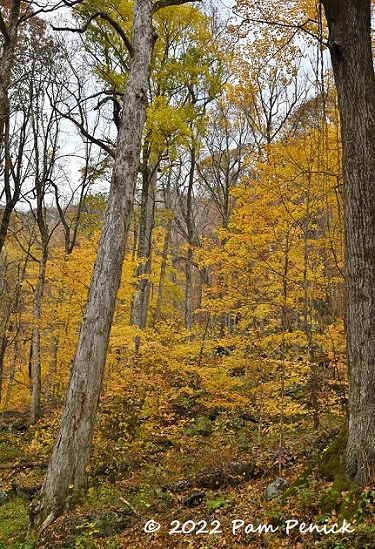
A golden wood
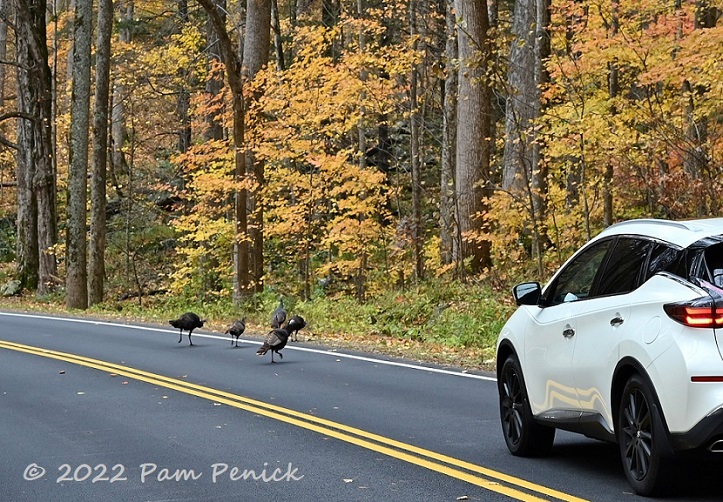
A flock of turkeys decided to cross the road, and drivers politely stopped for them.
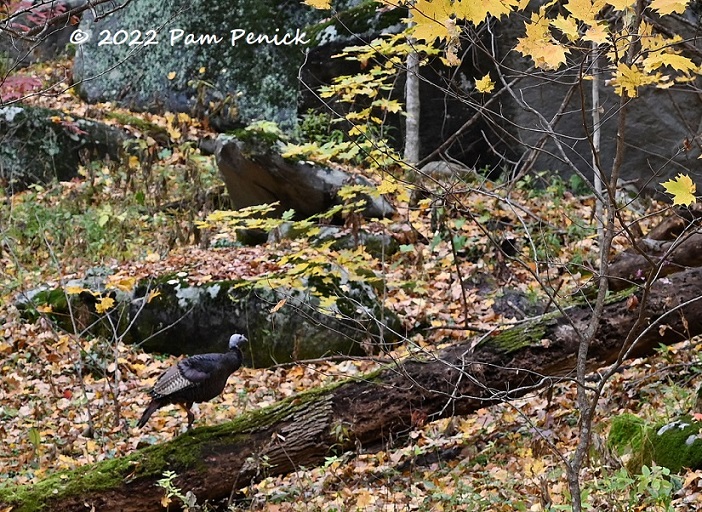
Safely across
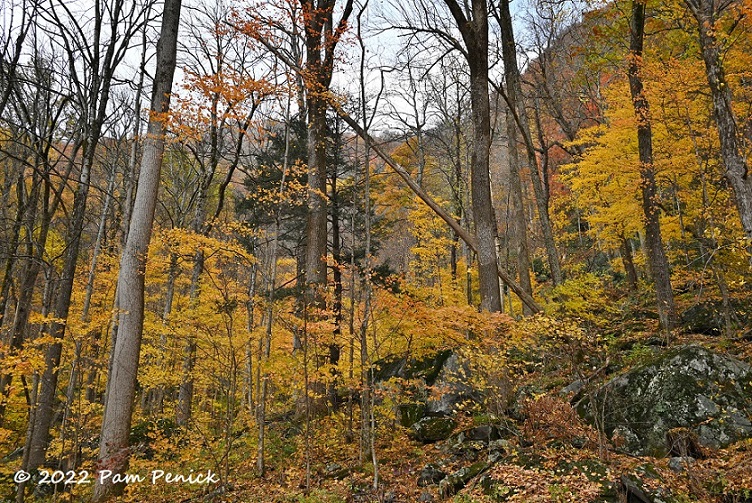
Gorgeous!
Cades Cove
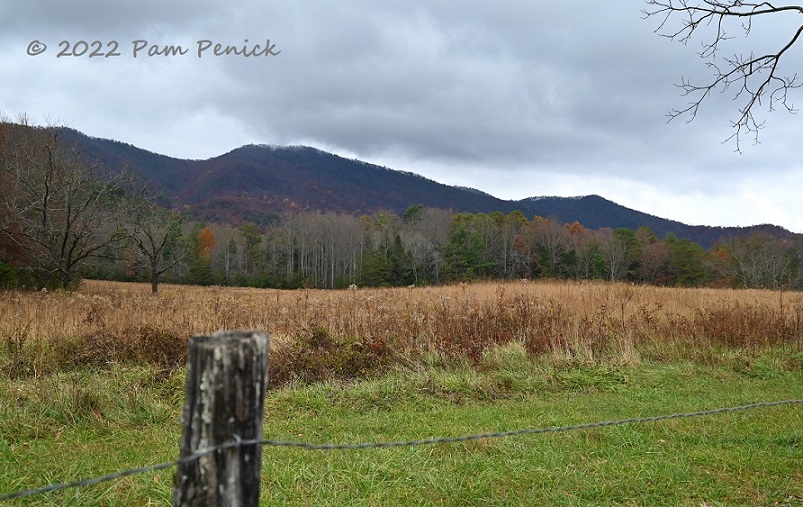
That afternoon we made our way to Cades Cove, a picturesque valley near Gatlinburg, Tennessee, in Great Smoky Mountains National Park. Native Americans lived in Cades Cove for thousands of years, before being pushed out. In the early 1800s, families of Anglo settlers arrived to farm and built the log cabins, primitive churches, a mill, and other structures that remain standing today. Their numbers grew, and 700 people resided in Cades Cove by 1900. Just 30 years later, however, most of them had accepted buyouts for their land when the national park was established.
Today the valley is managed as a historic district, and earlier management practices of grazing and haying, to maintain the open fields, are being phased out, according to the Cades Cove Tour brochure. Prescribed fire keeps the meadows free of shrubs and trees and aids in the re-establishment of native plants.
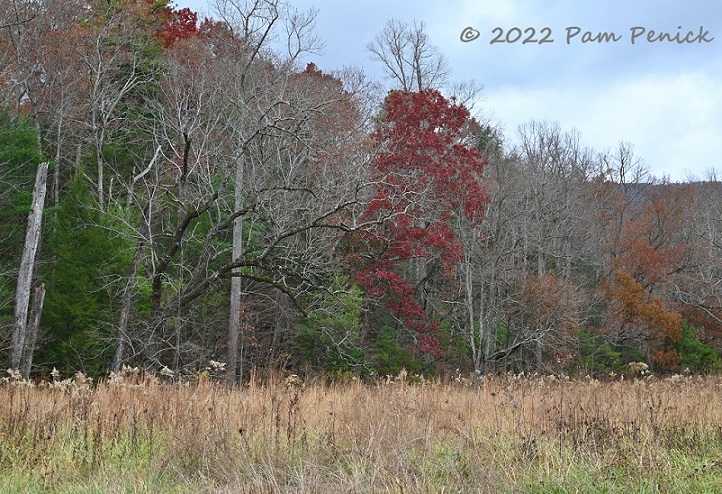
An 11-mile, one-way road loops through the valley, which visitors can drive, walk, or bike. Cades Cove is reportedly one of the most visited areas of the park, but visitors were few on this chilly, drizzly afternoon.
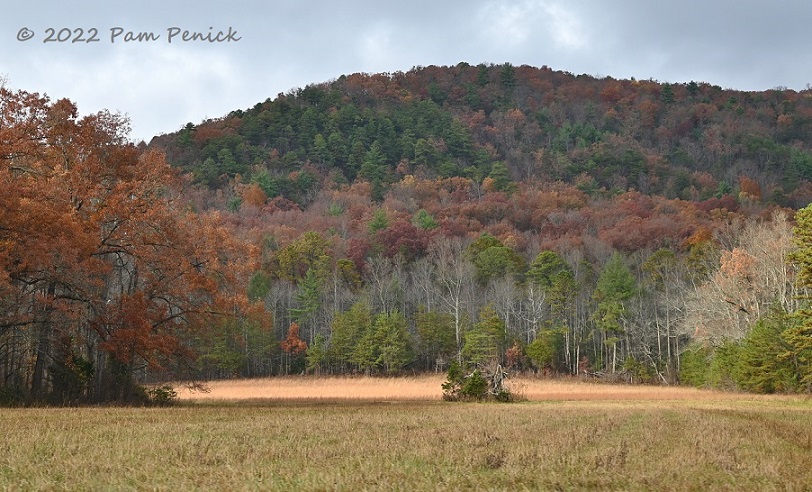
We drove past quiet, tawny meadows in happy solitude. Whenever we did see a line of cars stopped on the side of the road, we quickly learned that meant that a bear had been spotted.
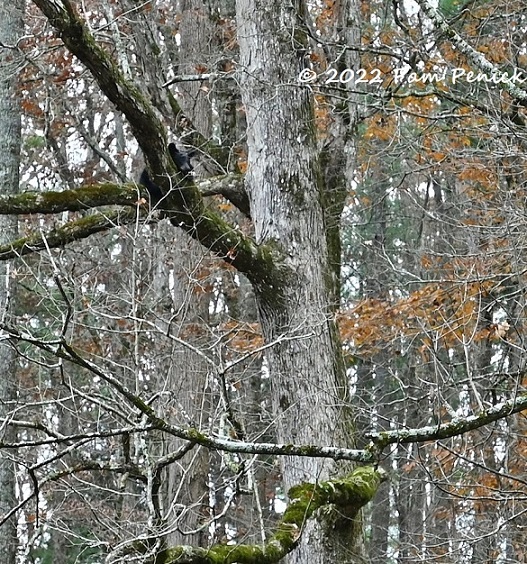
Like this furry fellow, lounging high in a tree. See him?
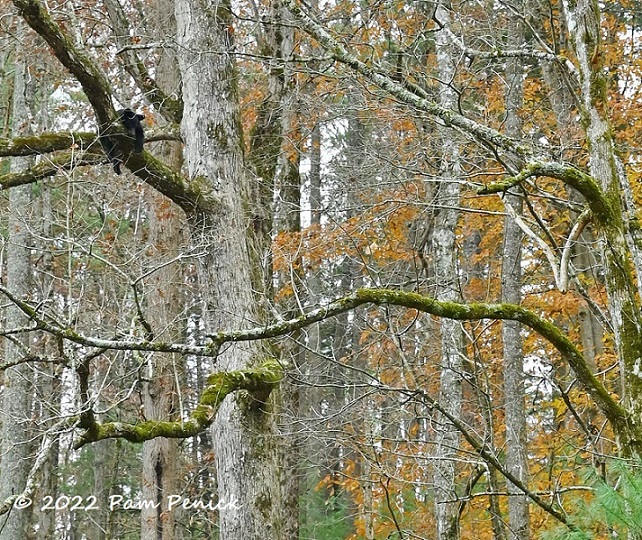
Here’s a wider view.
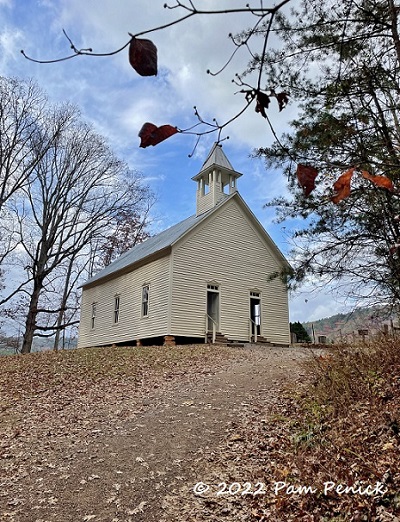
Methodists in the cove were outnumbered by Baptists, as the brochure tells it, but they managed to establish a church. This one, built in 1902, replaced an earlier log church.
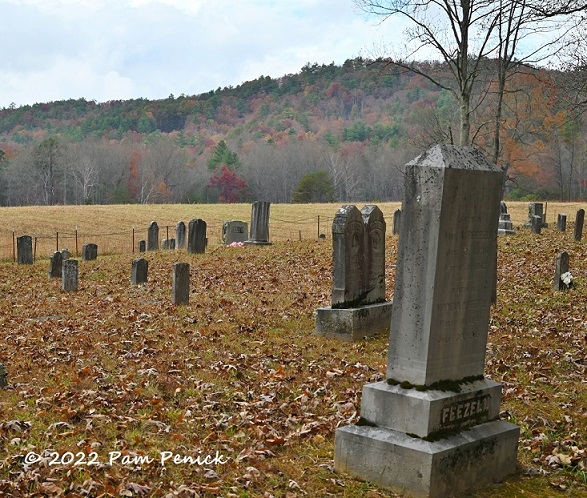
Out back, a cemetery quietly memorializes the cove Methodists.
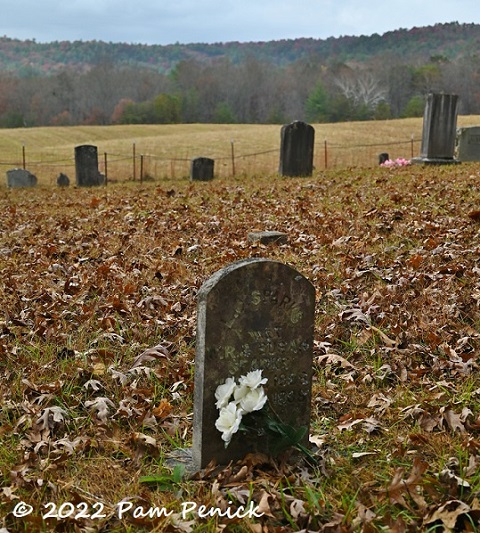
The departed are not forgotten. Some of the gravestones were adorned with flowers.
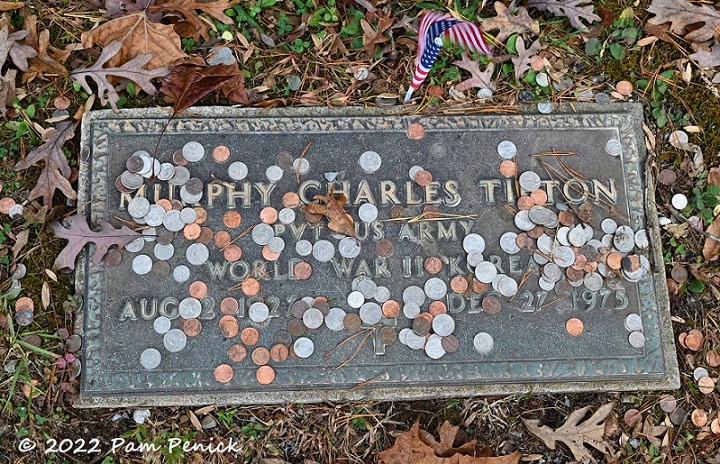
Others with coins and flags.
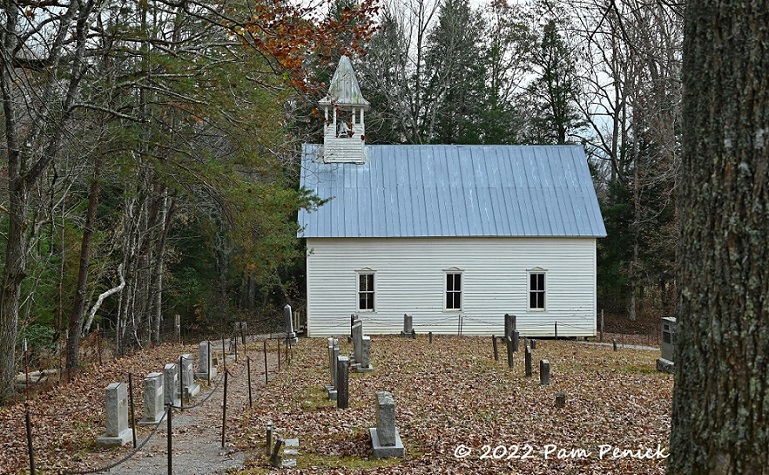
Peaceful, but also a little haunted, perhaps, on this Halloween afternoon?
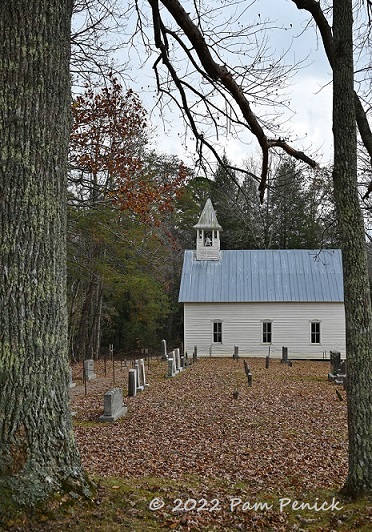
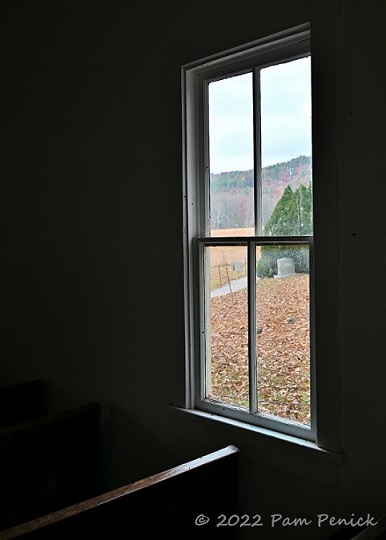
A quick look inside
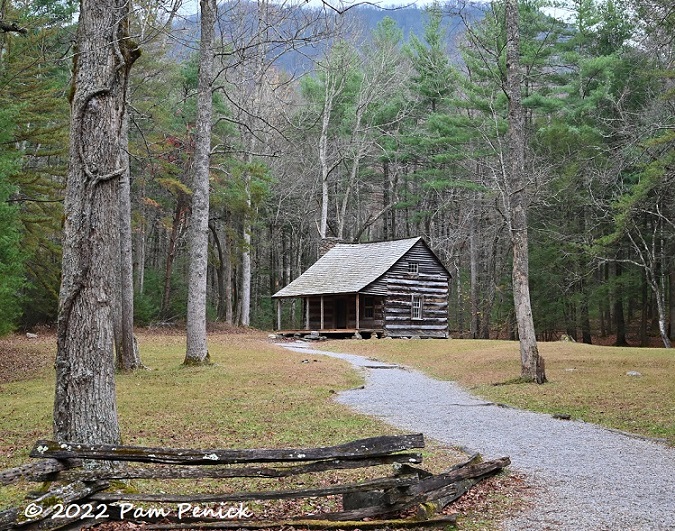
One of the log cabins along the loop road. This one belonged to George Washington “Carter” Shields, who fought for the Union in the Civil War.
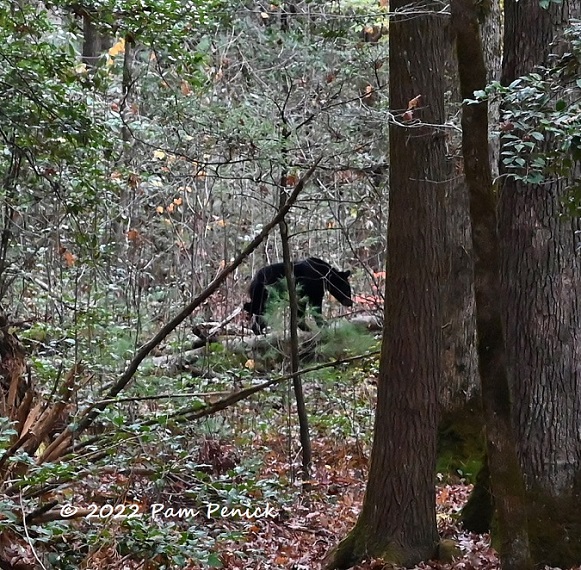
The human history of Cades Cove is interesting, but seeing a bear in the wild is far more so, at least for me. We saw 4 black bears this day, surpassing my expectations. Later, when we mentioned our bear sightings to Asheville residents, we usually got a smile and something like this: “Oh yeah, we get bears in our yard all the time.” OK, so bears for Ashevillians are equivalent to deer for me — no-big-deal garden visitors who can be rather pesky.

But they sure do like to decorate with bears here!
Up next: An autumn stroll at the North Carolina Arboretum’s botanical garden with bonsai. For a look back at elk watching in Cataloochee Valley, click here.


I went to college in Knoxville and spent lots of time in Cades Cove and the surrounding area. Your photos are so beautiful and really do it justice. Thanks for sharing these!
Thank you for the compliment, Chris. It’s such a beautiful area to visit.
Thank you for taking us along, Pam. This is such gorgeous – and interesting – country. Your photos are wonderful!
Thank you, Kathryn!
Your beautiful photos make me homesick for fall in Georgia where I grew up. In 2010 our family had a reunion in the Smokies, and we, too, got excited about our bear sighting! Can’t see that in Round Rock!
I’m kind of glad about that — deer are trouble enough — but they are exciting to spot in the wild. Thanks for your comment, Paula. I’m happy you enjoyed the photos!
Beautiful pictures, especially the fall colors. Thank you for sharing them.
It’s my pleasure, Dorothy. I’m glad you enjoyed them.